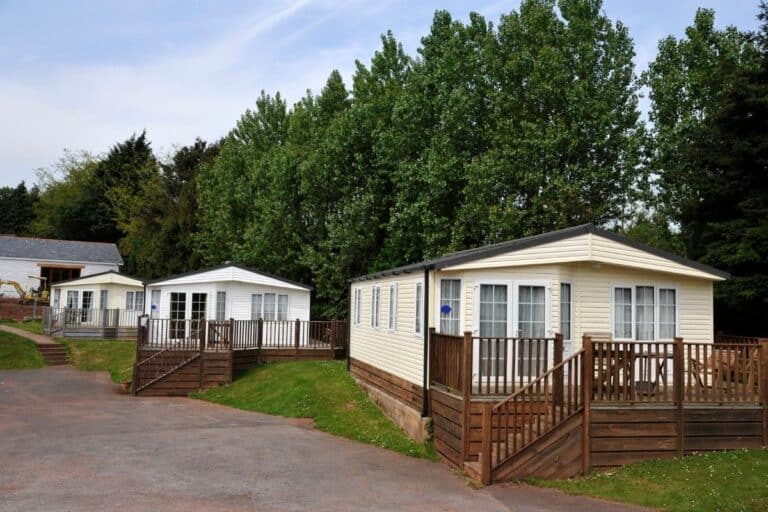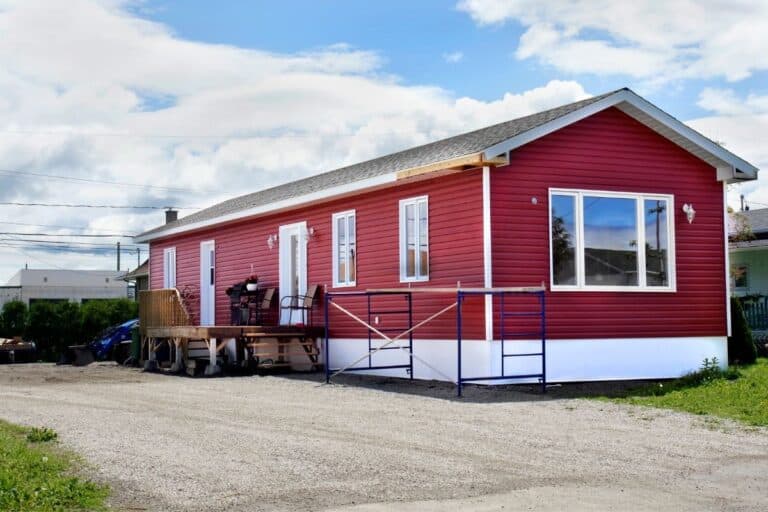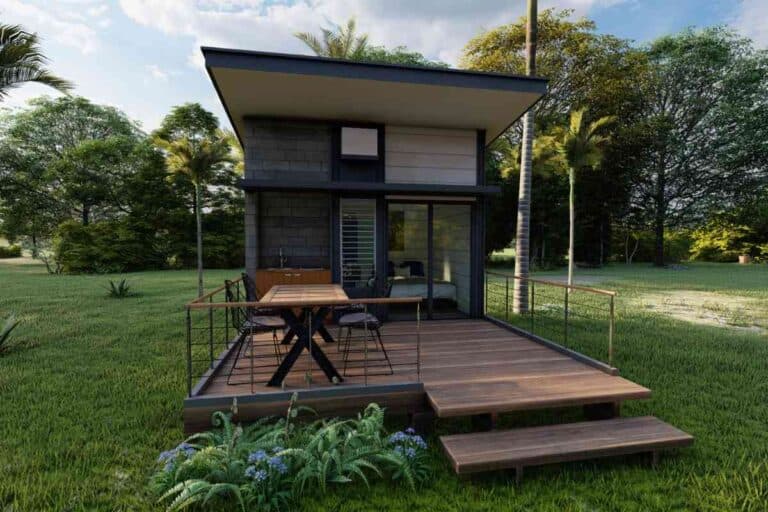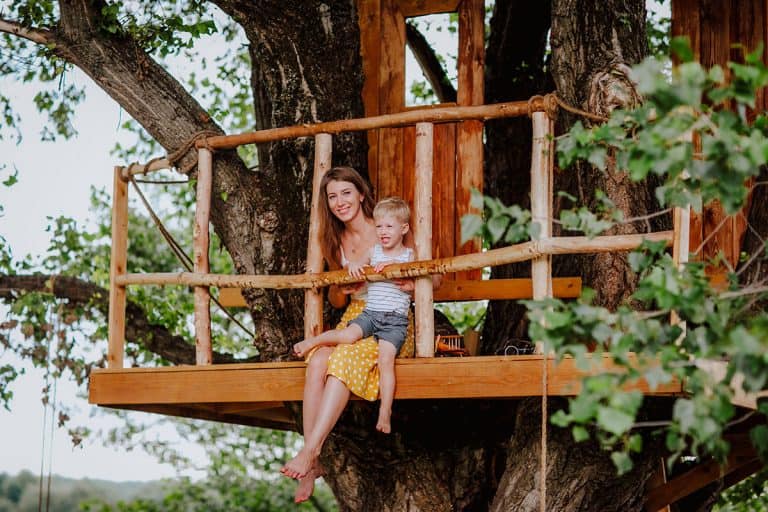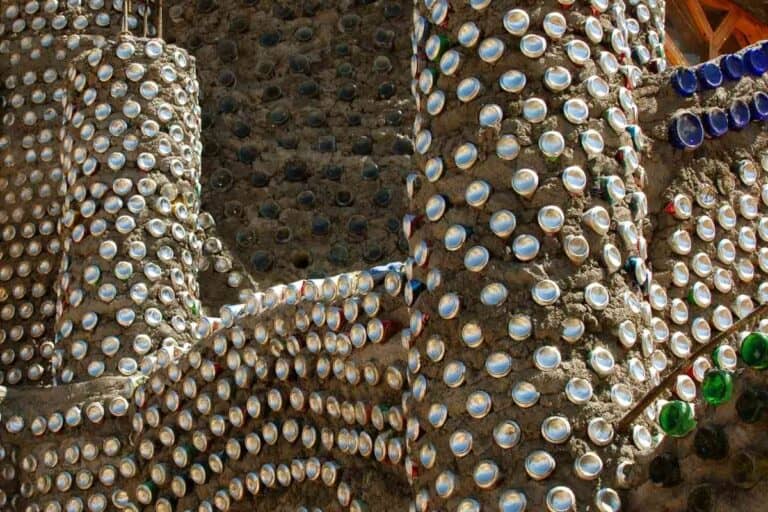Here’s How Much It Cost to Build a Cabin In 2024
Building a cabin can be an exciting adventure, offering a tranquil escape from the hustle and bustle of everyday life. As with any construction project, various factors can influence the total cost of building a cabin, making it essential to carefully consider your budget and desired features. Key aspects that contribute to the overall cost include cabin type, size, materials, location, and labor expenses.
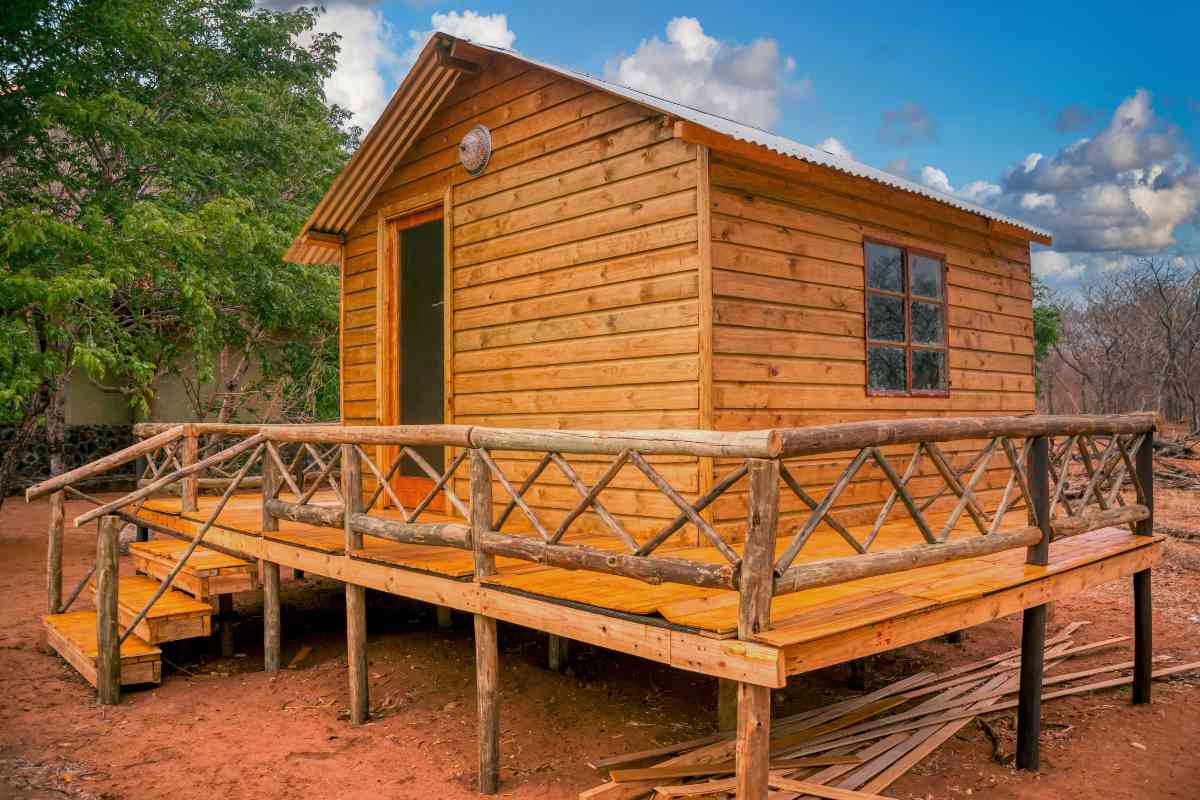
How much does it cost to build a cabin?
The cost of building a cabin varies based on factors like size, location, materials, and labor. Typically, the price ranges from $125 to $300 per square foot. Key expenses include land acquisition, construction materials, labor, and potential permits. Location significantly impacts costs, with remote areas potentially increasing transportation expenses.
Other considerations include cabin type, design complexity, and long-term maintenance.
When embarking on the cabin-building journey, start by determining your cabin type and overall vision for the project. This decision will significantly impact the cost, as larger cabins require more materials and labor. Additionally, consider the cost of land, potential permit fees, and any utilities necessary for your specific needs. By examining these factors, you can establish a better understanding of the financial investment required for building your dream cabin.
Key Takeaways
- Cabin costs depend on factors such as size, materials, land, and labor expenses.
- Consider permits, regulations, and long-term considerations when budgeting for your cabin.
- Explore various cabin styles and options to reduce costs and meet your budget requirements.
Determining Your Cabin Type
When it comes to building a cabin, the first step is to determine the type of cabin you want. There are several types of cabins to choose from, including small log cabins, rustic cabins, and beam cabins.
A small log cabin is a perfect choice for those who prefer a traditional, cozy design. If you want to enjoy the natural beauty of wood, a log cabin design may be your best choice.
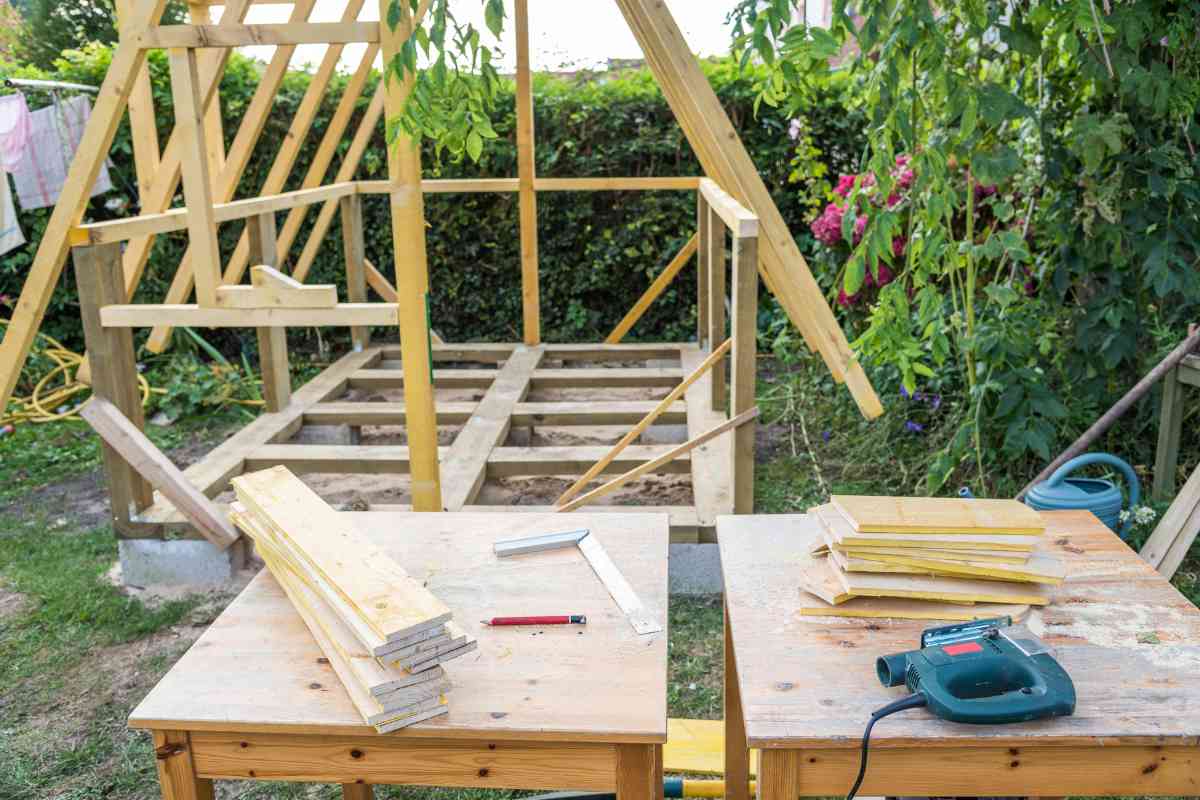
On the other hand, a rustic cabin offers a simpler, more rugged aesthetic, using natural materials such as stone and reclaimed wood. This type of cabin is ideal for those who want to truly immerse themselves in nature.
A beam cabin is a more modern approach, using large beams, often made from steel or laminated wood, to create an open and airy interior. This type of cabin provides a contemporary look with the same charm of a traditional cabin.
After deciding on the design, you can choose between constructing a DIY cabin or opting for a modular cabin. DIY cabins are built from the ground up by yourself or with the help of friends and family.
This option can be more cost-effective but might require more time and effort. Modular cabins, on the other hand, are pre-fabricated and can be assembled on-site, which can save both time and labor costs.
Here’s a comparison of different cabin types to help you decide:
| Cabin Type | Design Style |
|---|---|
| Small Log Cabin | Traditional, cozy, wood |
| Rustic Cabin | Rugged, natural materials |
| Beam Cabin | Modern, open, airy |
Considering factors such as your budget, construction time, and desired design style will help you decide on the perfect cabin type for your needs. Remember to take your time and explore different options to find the ideal fit for your dream cabin.
Overview of Cabin Costs

When considering building a cabin, there are various factors affecting the overall cost that you should be aware of. These factors include the size of the cabin, location, materials, and labor costs. Let’s explore some of these factors to give you a clearer understanding of what to expect when building a cabin.
Firstly, the cost of materials plays a significant role in the total cost of building a cabin. The choice in materials can impact the final cost, as higher quality or more expensive materials will increase your overall expenditure. It is crucial to establish a budget before selecting the materials for the project.
Building costs vary depending on the size of the cabin and its design complexity. A more extensive cabin with multiple rooms, or one with additional features such as a loft or large deck, will generally be more expensive to build.
Ensure that you have a clear understanding of your desired cabin size and design, as this will help you in determining the appropriate building costs.
Location is another key factor in the overall cost of constructing a cabin. Land prices can vary significantly depending on the area, accessibility, and existing infrastructure.
Moreover, building in a remote location may incur additional costs for transporting materials and labor. It is important to thoroughly research the location and factor in any extra expenses that may arise during the building process.
Labor costs will also contribute to the overall expense of building your cabin. It is essential to consider the rates of professional contractors, architects, and other skilled laborers, as these expenses can accumulate quickly.
When planning the construction, be sure to obtain quotes and establish a clear understanding of the labor costs involved.
Here’s a simplified example of a cost breakdown to help better illustrate these points:
| Expense category | Cost range |
|---|---|
| Land cost | $10,000 – $50,000 |
| Material cost | $20,000 – $100,000 |
| Labor cost | $10,000 – $60,000 |
| Utilities (if applicable) | $5,000 – $15,000 |
Ultimately, the total cost of constructing a cabin will depend on your specific choices in design, materials, location, and labor. Being fully informed about these elements will help you make the best decisions and keep the costs within your budget.
Size and its Impact on Cost
When considering the cost of building a cabin, one of the most influential factors is the size. Your chosen cabin size, typically measured in square feet, directly impacts the amount of materials needed and the overall construction time.
In this section, we’ll discuss the relationship between cabin size and construction cost while staying brief and focusing on the importance of square footage.
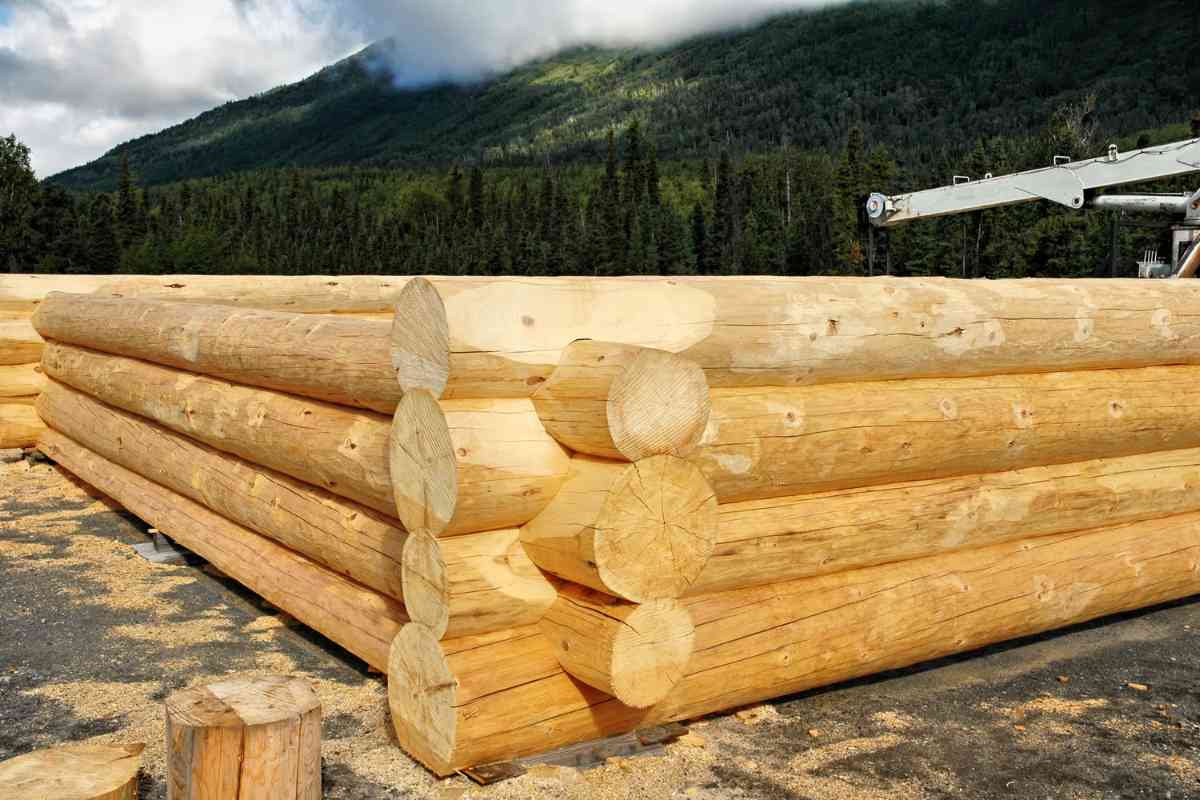
In general, larger cabins require more materials, leading to increased costs. As the cabin’s square footage increases, so does the volume of lumber, insulation, roofing, and other materials needed to complete the structure.
Furthermore, larger structures require more time and labor to construct, adding to the overall cost of building your cabin.
To illustrate the point, here is a simple table of cabin size and estimated cost per square foot:
| Cabin Size (square feet) | Estimated Cost per square foot |
|---|---|
| 100 – 400 | $100 – $150 |
| 400 – 800 | $85 – $125 |
| 800 – 1200 | $75 – $110 |
| 1200 – 1600 | $70 – $95 |
Please note that these estimated costs per square foot are for illustration purposes and may vary depending on factors such as location, materials used, and local labor rates.
It’s essential to keep your budget in mind while planning the size of your cabin. Smaller cabins can often be built more economically, as they require fewer materials and less labor.
On the other hand, larger cabins provide more living space and amenities, potentially offering a higher return on investment if used for rental purposes or resale.
Ultimately, the optimal size of your cabin directly depends on your unique requirements, preferences, and budget.
By carefully considering the impact of cabin’s square footage on construction costs, you can make a well-informed decision to create the perfect cabin that meets both your needs and your financial goals.
Cost of Land
When planning to build a cabin, one of the primary factors to consider is the cost of land. Land prices can vary significantly depending on the location, size of the property, and its surrounding amenities.
It’s essential to research properties in the area where you want to build to get a grasp on the market rates.

There are several factors that can impact the price of land, such as proximity to natural resources like water, forests, or mountain views.
For instance, building a cabin near a picturesque lake will generally be more expensive than purchasing land further from the water. Moreover, land that is easily accessible and connected to basic infrastructures like electricity and water will also cost more.
It’s important to note the type of cabin you plan to build and its purpose. Traditional cabins are often built off the ground, which may require additional land preparation, such as leveling the ground or installing a foundation. This factor, too, will impact your land cost.
Keep in mind there may also be additional fees associated with purchasing land, such as closing costs, permit fees, and the cost for inspections. Always be prepared to cover these miscellaneous expenses when budgeting for your cabin.
Here’s a simple table to help you understand the various factors that can contribute to the cost of land:
| Factor | Explanation |
|---|---|
| Location | Proximity to natural resources and/or amenities like water and forests |
| Accessibility and Utilities | Connection to basic infrastructure like electricity and water supply |
| Ground Preparation | Costs related to leveling the ground or installing a foundation |
| Additional Fees | Permit fees, inspections, closing costs, etc. |
In conclusion, when budgeting for your cabin, it’s crucial to extensively research land cost based on factors such as location, accessibility, and additional fees. Doing so will contribute to a more efficient and cost-effective cabin-building experience.
Labor and Construction Costs
When building a cabin, it is crucial to consider both labor and construction costs. The overall cost will depend on various factors, such as the size and design of the cabin, the materials used, and the location of the build.
Labor costs can typically make up a significant portion of the total expense in any construction project. Labor costs for building a cabin can vary depending on the region and the availability of skilled workers.
Generally, hiring a general contractor can help streamline the process and ensure that the work is completed efficiently.
Construction material costs are another essential element to consider. This encompasses the expenses associated with purchasing the building materials and their delivery to the construction site.
Common construction materials used in cabin building include wood, logs, straw bales, and cob. The choice of materials can significantly impact the overall price of the cabin, with some materials being more cost-effective than others.
One thing to keep in mind is extra costs that might arise during construction. For example, there could be expenses related to excavation work, site preparation, or even permits and licenses. It is wise to account for these additional costs in your budget to avoid any unexpected surprises.
Here’s a sample breakdown of costs associated with building a cabin:
| Cost Item | Estimated Cost |
|---|---|
| Labor | $30 – $50 per hour |
| Building Materials | $20 – $60 per sq. ft. |
| Excavation Costs | $500 – $2,000 |
| Permits/Licenses | $100 – $500 |
In conclusion, understanding the labor and construction costs while planning your cabin project is vital to estimate the overall expenses and set a realistic budget.
Consider the different factors that can impact these costs, such as location, chosen materials, and any additional expenses, to help guide you towards a successful and cost-effective cabin build.
Utilities and Additional Costs
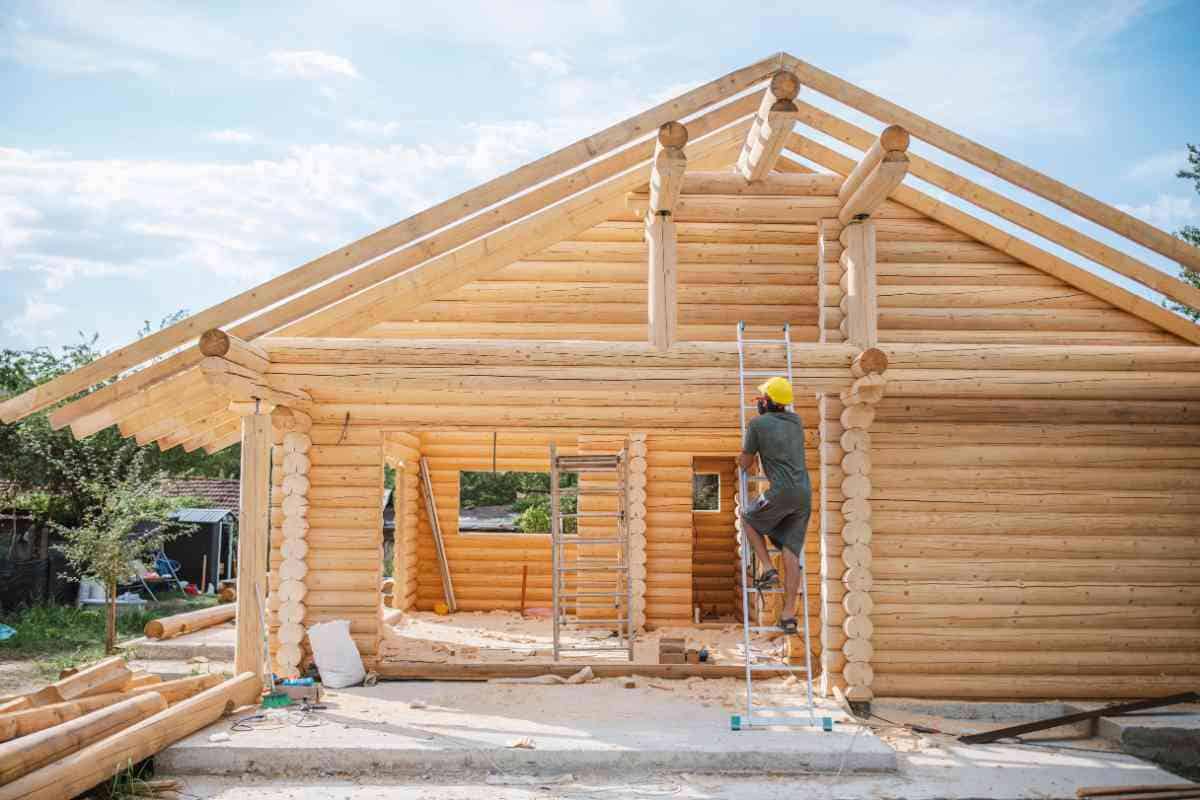
Building a cabin usually comes with various utility needs and additional costs. Keep in mind that the expenses will vary based on the size and type of cabin you choose, its location, and the facilities you want.
To provide your cabin with electricity and minimize your utility costs, consider installing solar panels or a wind turbine .
The initial investment required for solar panels can be around $15,000 to $25,000, while a wind turbine setup can cost between $4,000 to $8,000. Both solar and wind power systems are environmentally friendly and can offer significant savings over time.
| Utility Setup | Initial Investment Cost Range |
|---|---|
| Solar Panels | $15,000 – $25,000 |
| Wind Turbine System | $4,000 – $8,000 |
Setting up a septic system is typically required for wastewater management in remote cabin locations. A traditional septic tank and drain field can cost from $3,500 to $7,500, depending on the area and ground conditions.
In areas with poor soil or strict regulations, you may need a more advanced system, which can cost up to $15,000.
Electrical wiring and installation costs can vary vastly, depending on the complexity, materials, and level of expertise required. On average, the expense for wiring a small cabin may cost around $3,000 to $6,000.
Keep in mind that other additional costs may arise as well. For example, you may need to invest in a water well or a water filtration system if your cabin location doesn’t have easy access to clean water. Also, you may want to budget for appliances, insulation, and other necessities for a comfortable living.
In summary, while building a cabin, bear in mind the utilities and additional costs that you’ll need to cover. Plan your budget accordingly, and explore alternative energy options, such as solar panels or wind turbines, to keep ongoing expenses low and make your cabin more sustainable.
Options to Reduce Costs
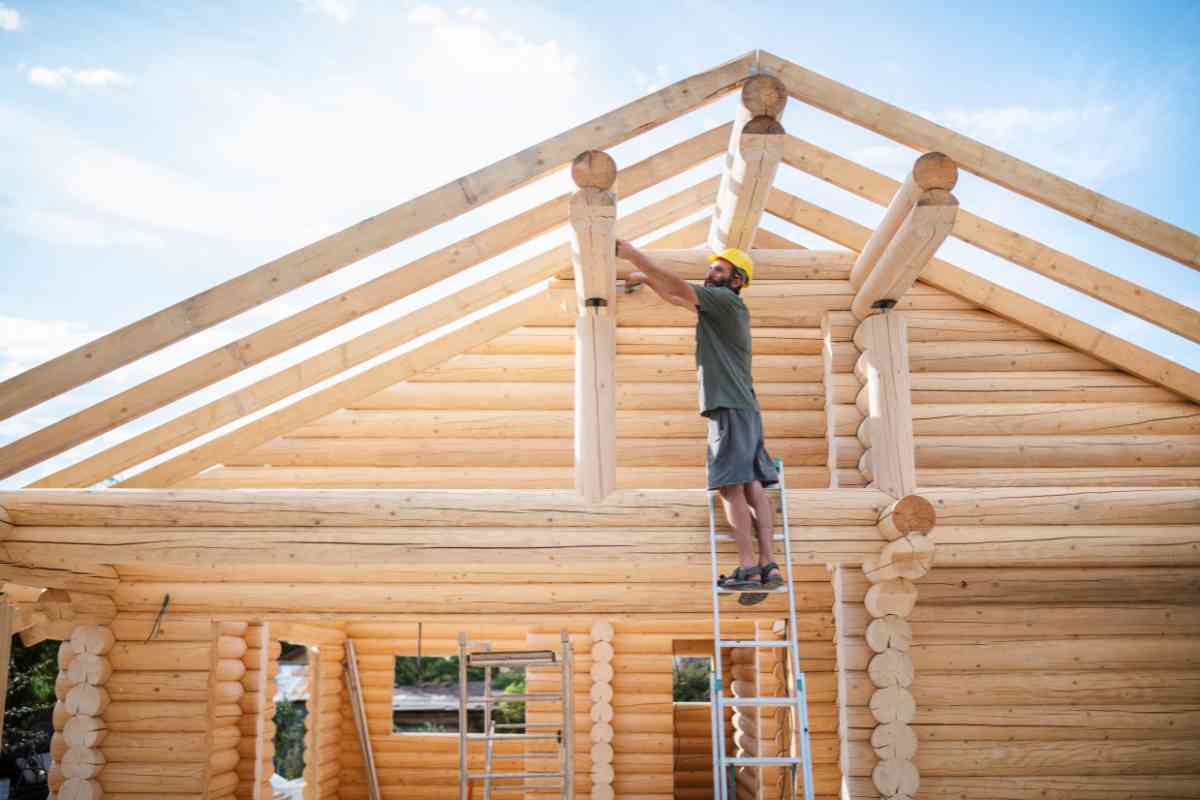
When building a cabin, there are several options to lower costs without compromising on quality. You can achieve a cheaper cabin without sacrificing functionality or comfort by making smart choices.
One way to reduce costs is to consider using soft timber logs for construction. Soft timber is typically more affordable and can still provide excellent insulation and aesthetic appeal, while offering a good deal on your building materials.
Another option for lowering costs is to choose flat land for your cabin’s location. Flat land requires less preparation and leveling than a sloped or uneven site, which can save on excavation and grading costs.
Flat land often makes it easier to lay foundations and install utilities, saving time and money during construction.
To further cut down on costs, consider the following tips:
- Design your cabin carefully, optimizing the space and minimizing waste materials.
- Look for deals on fixtures and fittings, such as reclaimed wood, second-hand appliances, or discounted items.
- Opt for natural and low-cost insulation materials, like straw bales or cellulose, to improve energy efficiency while reducing construction costs.
- Explore DIY-friendly options, such as tiny house kits, which can be assembled easily and at a lower cost than traditional cabin construction.
By considering these options and making informed decisions, you can successfully build a cost-effective cabin while staying within your budget.
Common Cabin Styles and Their Costs
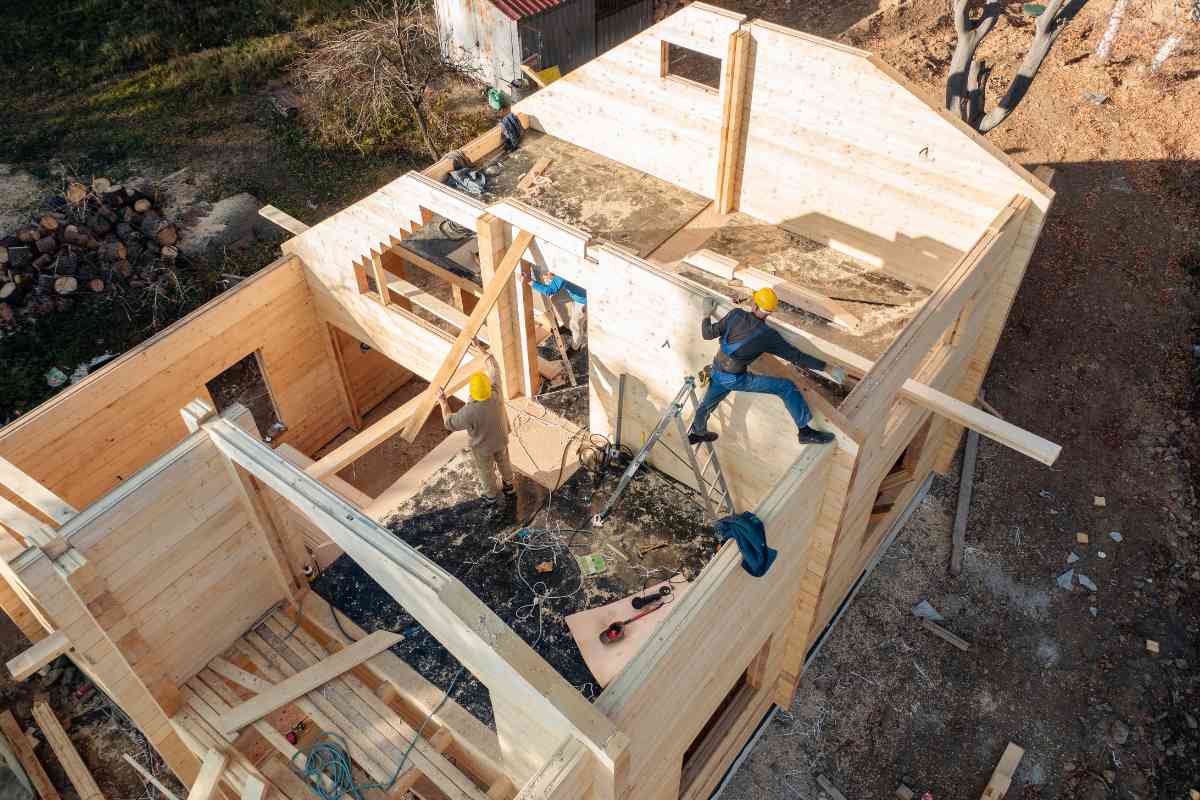
When it comes to building a cabin, there are a variety of styles to choose from. This section’ll discuss some common cabin styles and their associated costs. Keep in mind that the costs can vary greatly depending on factors such as location, materials, and labor.
A-Frame Cabin: This style is characterized by its steep, triangular roof, which resembles the letter “A.” A-frames are popular for their simple design and relatively low construction costs. Smaller A-frame cabins can typically be built for around $50,000 to $100,000, depending on size and finishes.
Log Cabin: A classic cabin style, log cabins are built using logs as the main structural element. They come in various styles, such as handcrafted or milled logs. The cost of building a log cabin depends on the log style, but you can expect to spend anywhere from $100,000 to $350,000 or more for a complete build.
Tiny Cabin: If you’re interested in a more minimalist and eco-friendly lifestyle, a tiny cabin might be the perfect fit for you.
Generally, these cabins range between 100 and 400 square feet in size. Tiny cabin builds can cost as little as $10,000 for a DIY build, or up to $60,000 for a professionally constructed cabin.
Modern Cabin: A modern cabin is an excellent choice for those who prefer a contemporary look with clean lines and open spaces.
These cabins often feature large windows and blend with their surroundings. Building a modern cabin can be more expensive compared to other styles, with costs ranging from $150,000 to $500,000 or more.
| Cabin Style | Typical Cost Range |
|---|---|
| A-Frame Cabin | $50,000 to $100,000 |
| Log Cabin | $100,000 to $350,000 |
| Tiny Cabin | $10,000 to $60,000 |
| Modern Cabin | $150,000 to $500,000 |
When planning your cabin build, you should consider what style best suits your preferences, budget, and land.
Keep in mind that finishing touches, such as appliances, cabinetry, and flooring, can also add to the overall costs. Additionally, don’t forget to factor in permits, utility connections, and other fees related to the building process.
Permits and Regulations
Building a cabin can be an exciting project, but it’s essential to consider the permits and regulations involved before you begin. Complying with building codes and obtaining necessary permits is crucial to avoid potential fines and legal issues.
First, you should check the local building codes in your area. Building codes are a set of standards designed to promote safety and ensure that structures are built to last.
These regulations typically cover aspects such as foundation requirements, insulation, electrical systems, plumbing, and more. Adhering to building codes ensures that your cabin is safe and structurally sound for years to come.
Obtaining the required building permits is another important step in the process. Depending on your location and cabin size, you may need one or more permits. These permits give you legal permission to build, making sure that your construction plans align with local zoning laws and safety regulations.
Generally, you’ll need to submit your building plans to the local planning department for approval. The cost of obtaining a permit can vary depending on factors like the location, the size of the cabin, and local requirements.
To better understand whether you need a permit for a specific type of cabin, you can visit this page.
Take the time to research permitting requirements for your specific area and cabin project. Regulations can vary from one jurisdiction to another, and ignorance of the law can lead to costly consequences.
By doing your due diligence up-front, you can ensure that your cabin is built in alignment with all relevant laws and can be enjoyed without worry for years to come.
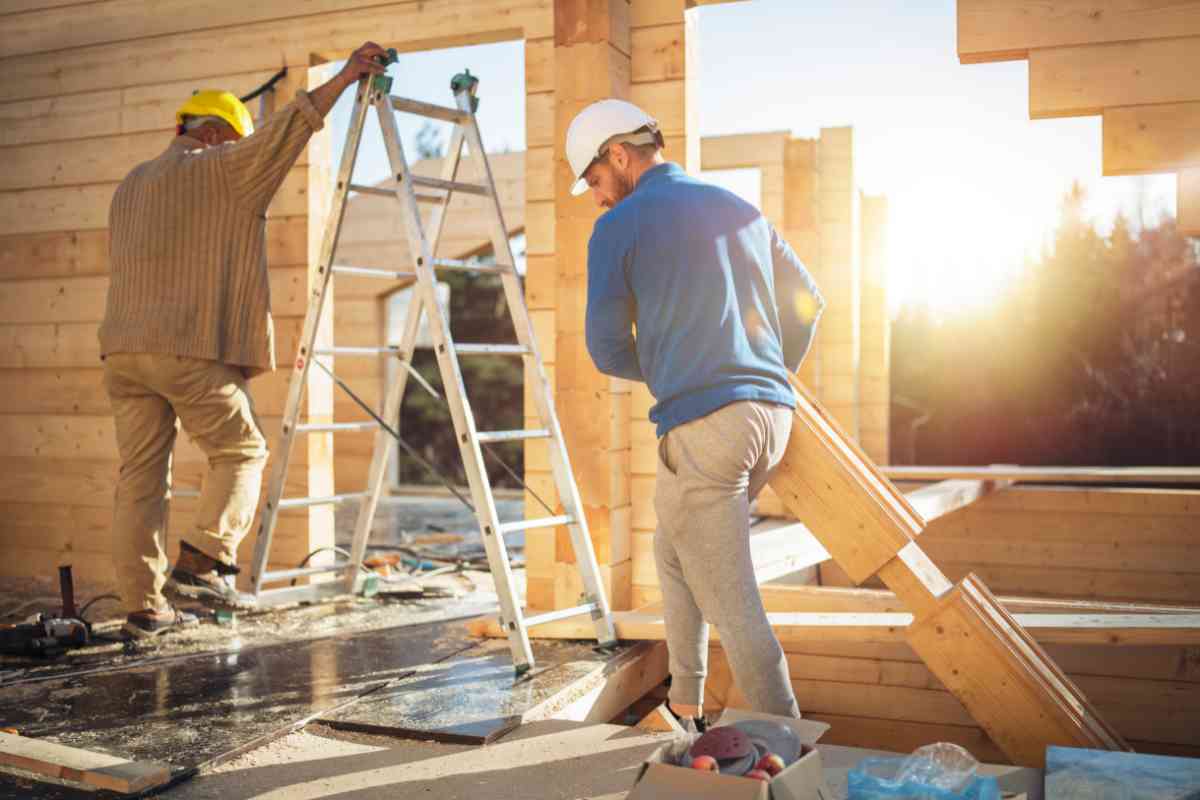
Long Term Cost Considerations
When building a cabin, it’s essential to consider the long-term costs associated with ownership. These costs are primarily related to regular maintenance and the various expenses incurred over the long run.
Regular Maintenance: Maintaining a cabin is crucial for preserving its value and ensuring it remains safe and comfortable.
Typical maintenance tasks include exterior painting, sealing the wood, cleaning the gutters, inspecting the foundation, and pest control.
Costs for these duties can vary depending on the size of the cabin, the materials used, and the region where it’s located. Below is a rough estimate of some regular maintenance tasks:
| Maintenance Task | Estimated Cost Range |
|---|---|
| Exterior Painting | $1,500 – $4,000 |
| Wood Sealing | $1,000 – $2,500 |
| Gutter Cleaning | $100 – $250 per year |
| Foundation Inspection | $300 – $500 per year |
| Pest Control | $100 – $300 per year |
Long Run Expenses: Your cabin might require significant repairs or improvements over time. For example, you may need to replace a worn-out roof or outdated plumbing and electrical systems.
Energy efficiency upgrades, like insulation and windows, can also help reduce long-term utility costs. These investments not only prolong the life of your cabin but also add to its overall value. Here are some examples of long-run expenses you may face:
- Roof Replacement: $5,000 – $15,000
- Plumbing and Electrical Upgrades: $2,000 – $10,000
- Insulation: $1,000 – $4,000
- Window Replacement: $3,000 – $10,000
Keep in mind that these costs are estimates, and your specific situation, preferences, and regional cost differences will impact the actual expenses.
By being proactive with maintenance and budgeting for long-term expenses, you can enjoy your cabin for years to come and protect your investment.
Conclusion
“In conclusion, building a log home or custom log homes is a journey that requires careful planning and consideration.
Every decision impacts the final outcome, from selecting the right builder to choosing between cedar, pine, spruce, fir, redwood, or cypress for your log cabin kit. The landscape and building site play crucial roles, especially if you’re considering an off-grid cabin.
Land clearing might be necessary, especially if the acre you’ve chosen is densely wooded. Driveway construction, drywall installation, and the inclusion of hvac systems are just a few of the many aspects to consider.
The type of foundation, whether it’s a stem wall or another kind, will influence foundation costs. Full scribe techniques and timber framing can enhance the durability and aesthetic of your cabin.
And, of course, don’t forget the essential services of plumbers and electricians to ensure your cabin is both functional and safe.
Whether you’re dreaming of custom cabins nestled in the woods or a grand log home overlooking a valley, keeping these keywords in mind will guide you through the intricate process of turning your vision into reality.”
Related Reading
- How Much Does It Cost to Build an A-Frame Cabin?
- Yurt Vs Cabin: Which Is Better?
- Container Home vs. Log Cabin
- How to Build an Off-Grid Cabin on a Budget
- Why Are Cabins Built Off The Ground?
- How Long Does a Log Cabin Last?
- Best Prefab Cabins: Top Options for Your Next Retreat
- 5 Best Tiny House Kits Under $5,000
- Cabin Water Systems
- How Long Do Log Cabins Take To Build? [A 10 Step Guide]
- Log Cabin Types
- Alternatives to Septic Systems for Cabins
- Do I Need A Permit To Build An Off-Grid Cabin?
- Are Poplar Logs Good For Log Cabins?
- Do Cabins Have Plumbing?
- Can You Live In A Log Cabin All Year Round?
Frequently Asked Questions
What is the average cost per square foot to build a cabin?
The average cost per square foot to build a cabin depends on various factors such as materials, labor, and location. Typically, it can range from $125 to $300 per square foot. However, these costs can vary significantly based on the type of cabin you’re building and the choices you make throughout the construction process.
How does location affect the cost of building a cabin?
The location of your cabin affects the cost in several ways, including land price, accessibility, and availability of materials. Building in a remote area may be more expensive due to the challenges of transporting materials and labor. Additionally, regions with higher land prices and strict zoning regulations can impact the overall cost of your project.
What factors influence the price of constructing a log cabin?
Several factors affect the price of constructing a log cabin. Some of these factors include:
Log type and quality: High-grade logs with fewer knots or imperfections are more expensive than lower-grade logs.
Design complexity: Custom designs with intricate details might require more skilled labor and specialized materials, driving up the cost.
Foundation type: Different types of foundations, such as slab, crawl space, or full basement, have different costs due to material requirements and labor.
Labor costs: Hiring experienced contractors and skilled workers, as well as the amount of time it takes to build the cabin can influence the overall price.
Permits and inspections: Obtaining the necessary building permits and undergoing inspections can add to the total cost of your project.
Are there more affordable options for building a cabin?
Yes, there are more affordable options for building a cabin. You may consider choosing a smaller cabin, a simple design, or using cost-effective materials. Another option is to build a modular or prefabricated cabin, which is typically less expensive than building a custom log cabin from scratch.
Does cabin size significantly impact the overall building cost?
Cabin size does impact the overall building cost, as larger cabins require more materials and labor. However, certain aspects of the cabin, such as the foundation or roofing, might have fixed costs that do not change proportionally with the cabin size. Although a larger cabin will generally cost more to build, the cost per square foot may decrease as the size of the cabin increases.
Is building a cabin generally cheaper than constructing a house?
Building a cabin can be cheaper than constructing a traditional house due to the simpler designs and reduced material costs. However, the final cost depends on several factors, including cabin size, design complexity, and materials used. Comparing costs on a per-square-foot basis can help you assess the differences between cabin and house construction.

